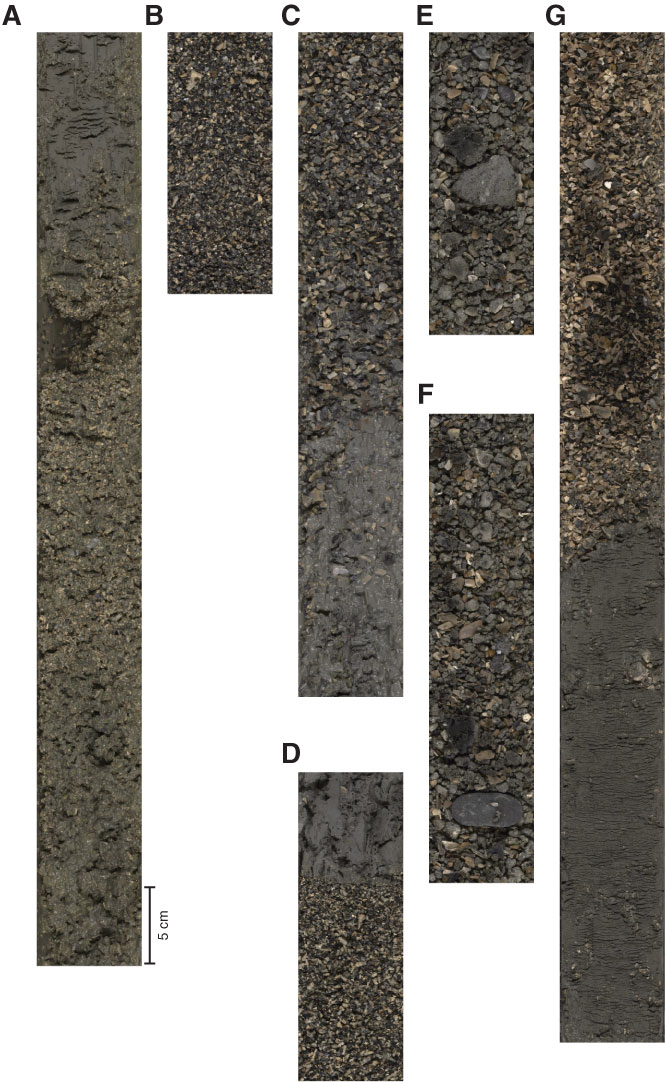
Figure F7. Core photographs of shelly layers thought to be largely cave-in (tops) and flow-in (bases) from drilling disturbance. A. Potential in situ shelly layer (interval 317-U1353B-12H-1, 0–60 cm), with disturbed mud below but possibly in situ mud above. B. First layer of washed shell material observed, interpreted as cave-in (interval 317-U1353B-17H-CC, 1–18 cm). C. Washed shelly material occurring at the top of a core (interval 317-U1353B-19H-1, 34–74 cm). D. Washed shelly material occurring at the base of a core (interval 317-U1353B-19H-4, 1–21 cm). E. Irregular concretions of sandy shelly limestone occurring within washed shell hash (interval 317-U1353B-36H-2, 91–111 cm). F. Large elongate graywacke pebble occurring within washed shell flow-in (interval 317-U1353B-35H-3, 80–110 cm). Smaller quartz pebbles are also present. G. Last core in which abundant caved deposits occur (interval 317-U1353B-60H-1, 72–141 cm).

Previous | Close | Next | Top of page